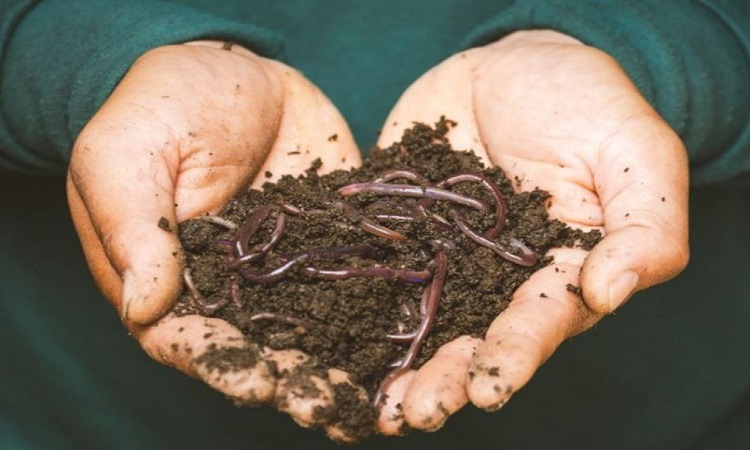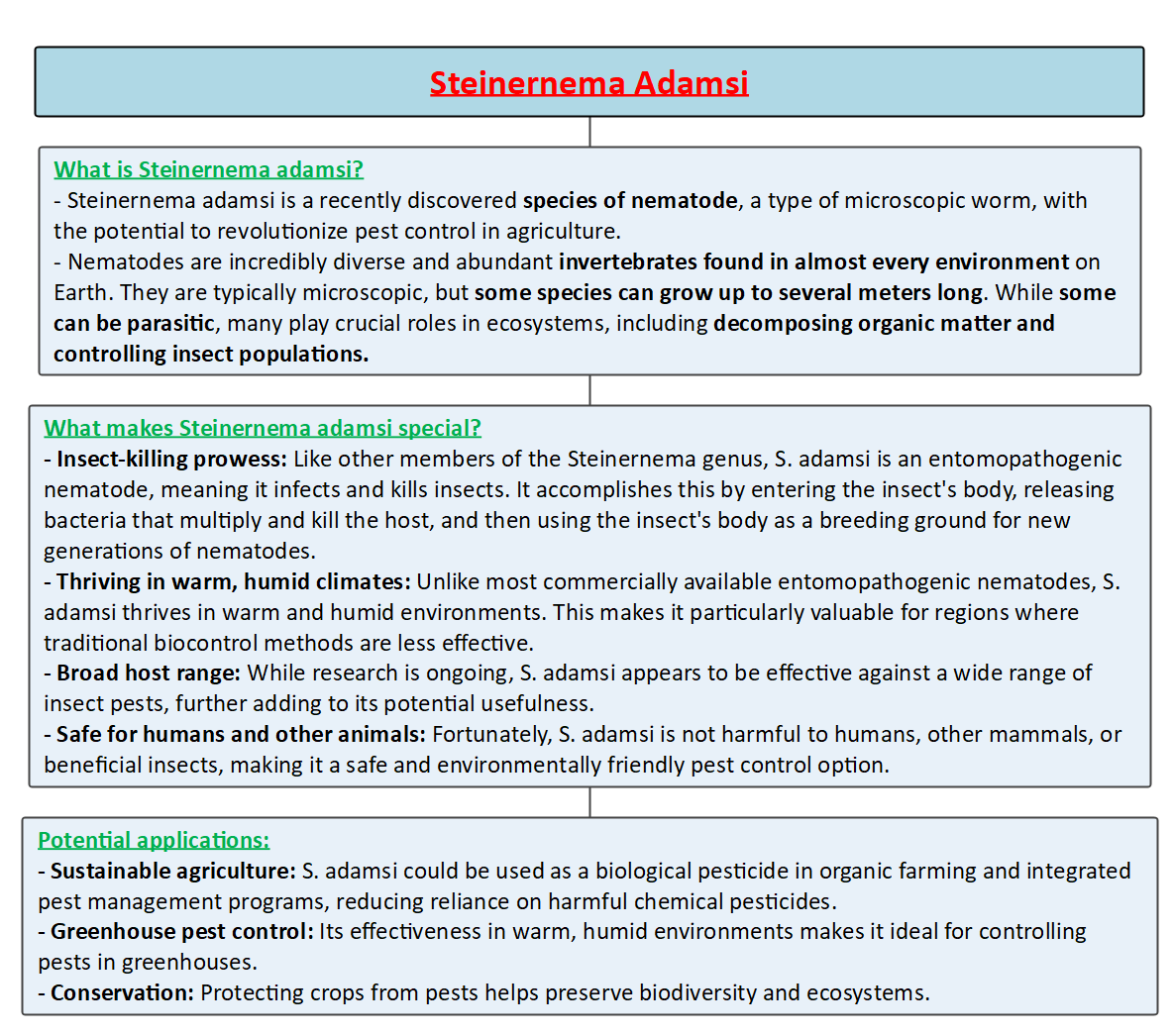Free Courses Sale ends Soon, Get It Now


Free Courses Sale ends Soon, Get It Now



Copyright infringement not intended
Picture Courtesy: https://www.dynamitenews.com/story/nematode-species-that-protect-crops-without-pesticides
Context: Scientists discovered a new nematode species named Steinernema adamsi, a tiny worm about half the width of a human hair that kills insects by injecting them with bacteria. It thrives in warm, humid climates where other beneficial nematodes struggle.
Details
Background
Physical Characteristics
Biological Significance
Practical Applications

Conclusion
|
PRACTICE QUESTION Q. ‘Steinernema adamsi’ has been featured in recent news headlines. What is Steinernema adamsi? A) A new type of smartphone app B) A newly discovered species of nematode C) A revolutionary new fabric for clothing D) A type of bacteria used in food production Answer: B Explanation: Steinernema adamsi is a newly discovered species of nematode, a microscopic roundworm, which has generated excitement in the world of sustainable agriculture. This tiny warrior, barely visible to the naked eye (around 0.5mm long and half the width of a human hair), holds the potential to revolutionize pest control in warm, humid climates. |
© 2024 iasgyan. All right reserved